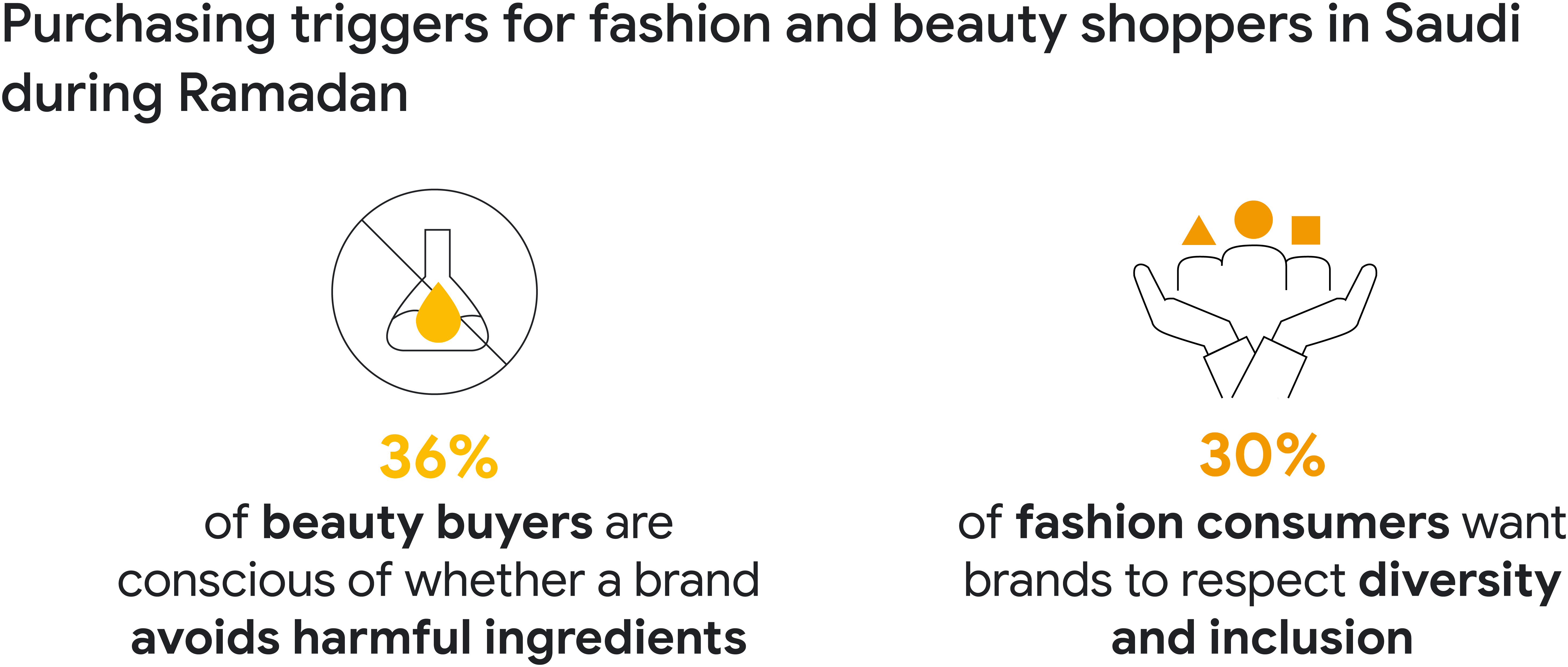By Jalaja Ramanunni

Google collaborated with Kantar to help advertisers better understand consumers in the Kingdom of Saudi Arabia (KSA), which is a crucial Middle Eastern market during the holy month. The research observed consumers’ shopping behaviors across five product categories: consumer electronics, home and garden, fashion, food and groceries and beauty. Based on their research, Google published a study titled Ramadan 2023: Research reveals how people in Saudi Arabia shop during the holy month.
During Ramadan, shoppers in Saudi Arabia exhibit three distinct purchasing behaviours when it comes to ‘why they shop for certain things’ according to the report: It observed different purchasing triggers for specific categories, the need for a hassle-free Ramadan shopping experience and the readiness to switch to faster brands and less expensive.
Here are the three key takeaways for marketers from the study:
1. Highlight features that matter to your customer
One way to improve the effectiveness of your shopping campaigns is to highlight the selling points that are most important to your target audience. 43 per cent of beauty buyers say they shop during Ramadan for personal reward, with 36 per cent prioritising sustainability and whether a brand avoids harmful ingredients. Thirty per cent of fashion buyers, meanwhile, want brands to respect diversity and inclusion. As for food and groceries, 39 per cent of shoppers in Saudi are enticed by promotions. By providing detailed information such as product sustainability in your ads, you can increase the likelihood of attracting interested shoppers and driving sales. Additionally, retail-focused reporting tools can help you monitor the ongoing performance of your products and make data-driven decisions to optimise your campaign over time.

2. Provide easy access to information to improve the shopping journey
The majority of consumers in Saudi Arabia want a hassle-free Ramadan shopping experience. However, approximately two-thirds encounter challenges with online shopping during this holy month, particularly concerning the online interface. Independent product reviews are challenging to locate for 25 per cent of consumer electronics shoppers and 23 per cent of beauty shoppers. In comparison, 20 per cent of consumer electronics buyers and 21 per cent of home and garden product purchasers experience issues with online registration or log-in. Additionally, 63 per cent of shoppers encounter difficulties when purchasing food and groceries offline.
Optimising the online shopping experience is crucial to address these concerns, particularly on mobile devices by improving site speed, streamlining navigation and purchase processes, and providing a personalised experience. For offline shopping, make product information easily accessible online and in-store with regular updates on stock availability to keep customers informed.
3. Retain customer loyalty by reaching them where they are

Remind people of the benefits and convenience of buying from your brand through a remarketing or retargeting campaign on video and display. Shoppers are open to changing brands if they offer faster and more cost-effective options. During Ramadan, 84 per cent of shoppers in Saudi Arabia typically stick to one or a few retailers, but a poor shopping experience can alter this behavior. For instance, 42 per cent of consumers in the Kingdom are willing to experiment with a new brand, retailer or platform if the product ships faster from there. Additionally, 36 per cent will consider switching if the item is available somewhere else first, and 33 per cent will do so if the product is cheaper.
Remarketing or retargeting campaigns on video and display can help emphasise the benefits and convenience of purchasing from your brand. These campaigns are designed to create tailored ads for previous visitors to your site, catering to their browsing and app usage habits. Address potential pain points in your marketing strategies, such as fast delivery, new stock and discounts.









